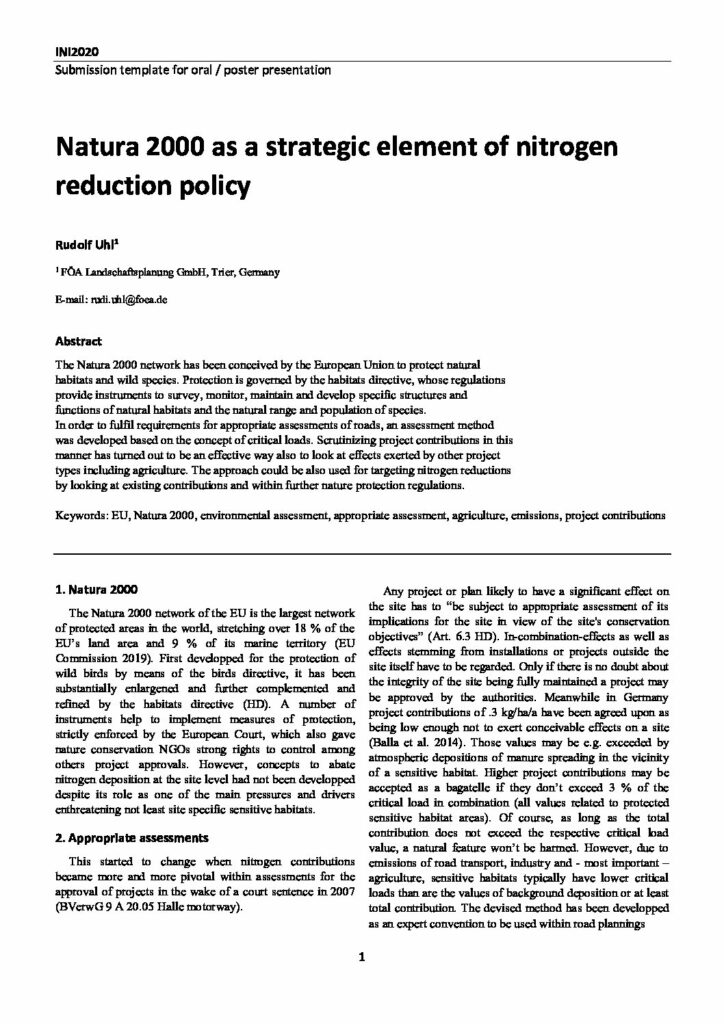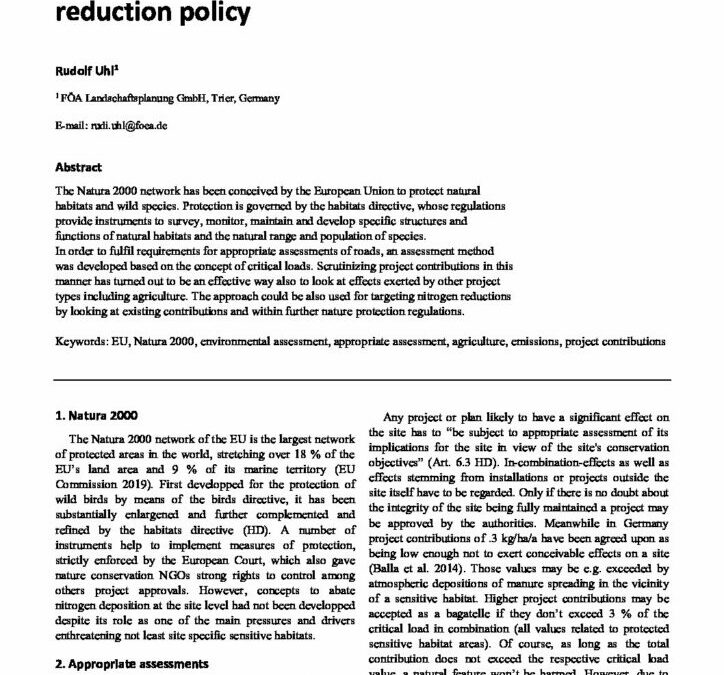Natura 2000 as a strategic element of nitrogen reduction policy

The Natura 2000 network has been conceived by the European Union to protect natural habitats and wild species. Protection is governed by the habitats directive, whose regulations provide instruments to survey, monitor, maintain and develop specific structures and functions of natural habitats and the natural range and population of species. In order to fulfil requirements for appropriate assessments of roads, an assessment method was developed based on the concept of critical loads. Scrutinizing project contributions in this manner has turned out to be an effective way also to look at effects exerted by other project types including agriculture. The approach could be also used for targeting nitrogen reductions by looking at existing contributions and within further nature protection regulations.
The Natura 2000 network of the EU is the largest network of protected areas in the world, stretching over 18 % of the EU’s land area and 9 % of its marine territory (EU Commission 2019). First developped for the protection of wild birds by means of the birds directive, it has been substantially enlargened and further complemented and refined by the habitats directive (HD). A number of instruments help to implement measures of protection, strictly enforced by the European Court, which also gave nature conservation NGOs strong rights to control among others project approvals. However, concepts to abate nitrogen deposition at the site level had not been developped despite its role as one of the main pressures and drivers enthreatening not least site specific sensitive habitats.
